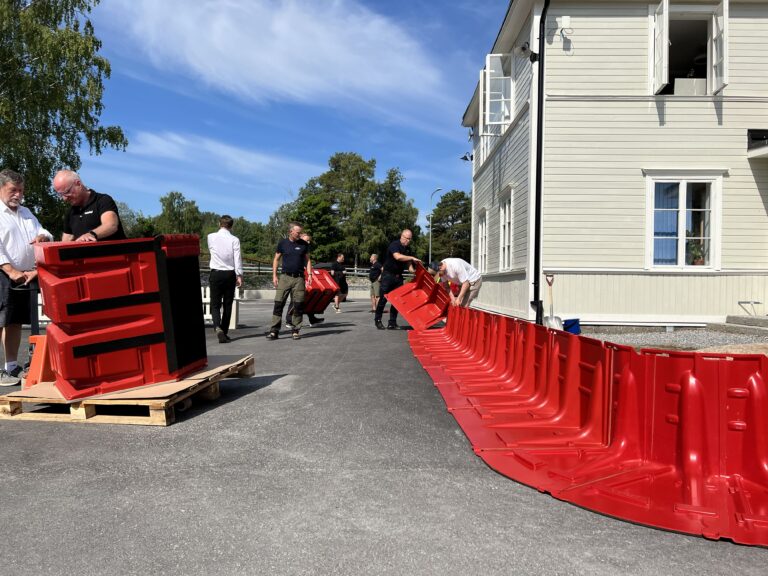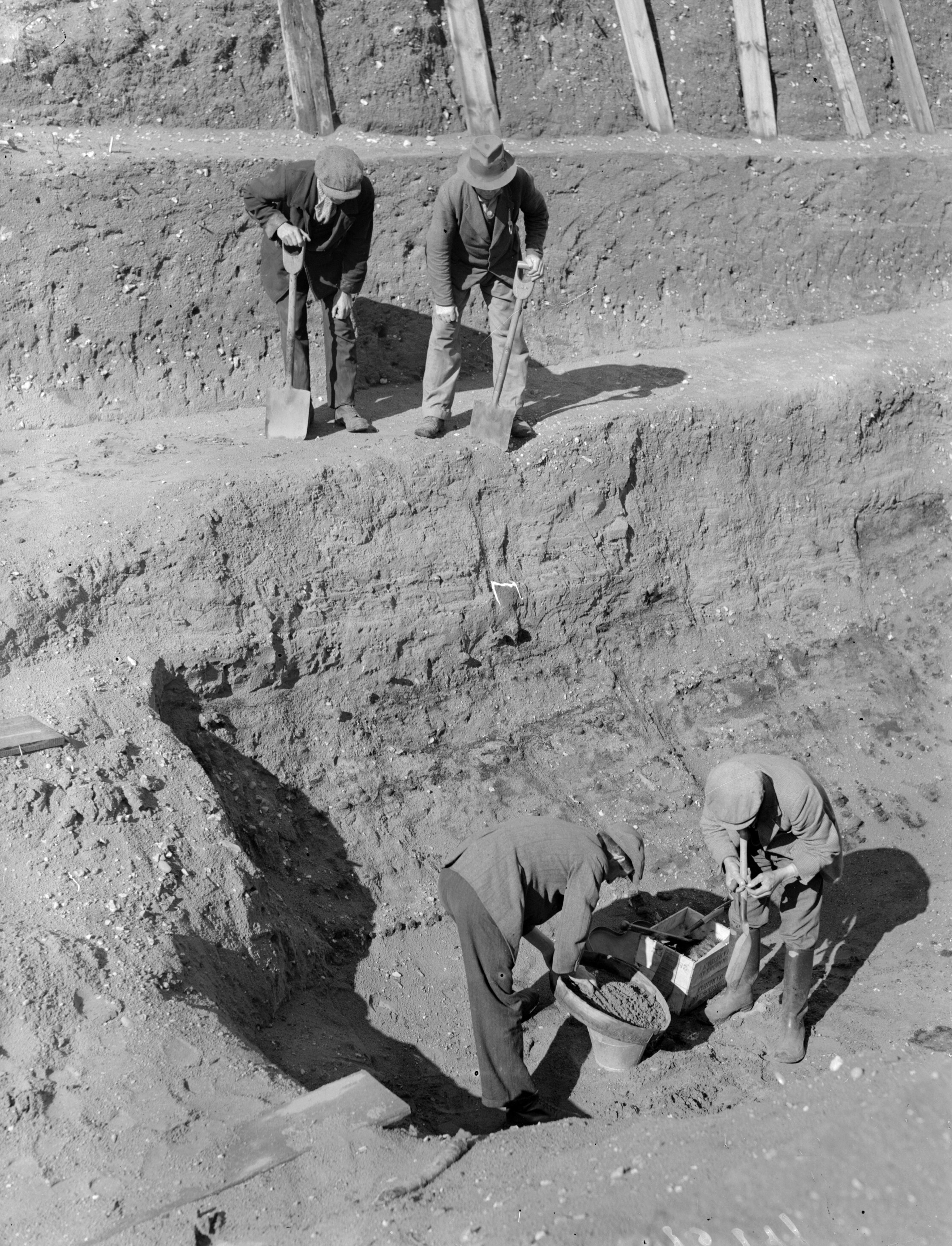Effective Flood Alert Systems: How They Work And Protect You

Table of Contents
How Flood Alert Systems Work
Flood alert systems rely on a sophisticated network of data collection, processing, and dissemination to deliver timely warnings. Understanding this process is key to appreciating their effectiveness in protecting lives and property.
Data Collection and Monitoring
The foundation of any effective flood alert system is the continuous monitoring of various environmental factors. This involves collecting data from a range of sources:
- Rain Gauges: These measure rainfall intensity and accumulation, providing crucial input for hydrological models.
- River Level Sensors: Strategically placed sensors monitor water levels in rivers and streams, identifying potential flood risks.
- Weather Radar: Radar technology detects precipitation patterns and intensity, offering a broader view of potential flooding areas.
- Satellite Imagery: Satellite-based remote sensing provides large-scale monitoring of water levels, soil saturation, and land inundation.
These data sources feed into real-time data streams, constantly updated and analyzed. This real-time data is combined with historical flood data analysis and predictive modeling using sophisticated AI algorithms to create comprehensive flood forecasts. The integration of diverse data sources ensures a more accurate and complete picture of the developing flood situation.
Data Processing and Analysis
Once collected, the raw data undergoes rigorous processing and analysis. Sophisticated algorithms and specialized software play a crucial role in this stage:
- Flood Risk Assessment: Algorithms assess the probability of flooding based on the collected data and historical patterns.
- Probability Modeling: Statistical models estimate the likelihood of different flood scenarios, helping to define warning thresholds.
- Hydrological Simulations: Computer models simulate the movement of water through river systems, predicting potential flood extent and timing.
Accurate and timely data processing is paramount for issuing effective flood warnings. Delays in analysis can significantly reduce the effectiveness of the alert system, limiting the time available for response and mitigation.
Dissemination of Flood Alerts
The effectiveness of a flood alert system hinges on its ability to quickly and efficiently disseminate warnings to the affected populations. Modern systems utilize a variety of methods:
- SMS (Text Messages): Short message service provides immediate alerts directly to mobile phones.
- Email: Emails deliver detailed flood warnings and instructions to registered users.
- Mobile Apps: Dedicated mobile applications offer real-time flood alerts, maps, and safety information.
- Sirens: Outdoor sirens provide a powerful audible warning to the community, especially in areas with limited mobile access.
- Public Broadcasts (Radio & TV): Broadcast media can reach a wide audience with crucial information about ongoing and developing flood situations.
These channels need to provide targeted alerts based on location and risk level, considering factors like language and accessibility features for people with disabilities. The use of multiple communication channels ensures widespread reach, maximizing the impact and effectiveness of the flood warning system.
Types of Flood Alert Systems
Flood alert systems vary in scope, sophistication, and management structure. Understanding these differences highlights the diversity of approaches to flood preparedness.
Community-Based Systems
Many communities utilize simpler, community-based flood alert systems:
- River Level Monitoring: Local residents may monitor river levels using basic gauges and report observations to a central point.
- Volunteer Observers: Trained volunteers monitor for signs of flooding and disseminate alerts within their community.
These systems are cost-effective but often have limitations in coverage and the sophistication of their predictive capabilities. They rely heavily on community participation and may not provide the same level of accuracy as more advanced systems.
National and Regional Systems
Governmental agencies at the national and regional levels deploy more advanced flood warning systems with broader coverage:
- Integration of Multiple Data Sources: These systems integrate data from numerous sources, offering a more holistic view of flood risk.
- Sophisticated Predictive Modeling: Advanced modeling techniques provide more accurate and timely flood forecasts.
- Wide-Reaching Alert Dissemination: National systems utilize multiple communication channels to reach a larger population.
Centralized, professionally managed systems offer advantages in terms of data analysis, predictive accuracy, and alert dissemination.
Private Sector Solutions
The private sector also plays a role in providing flood monitoring and alert services:
- Subscription-Based Models: Private companies offer subscription services providing hyperlocal flood alerts and risk assessments.
- Integration with Smart Home Technology: Some systems integrate with smart home devices, providing automated alerts and safety instructions.
- Hyperlocal Accuracy: Private solutions often offer a higher level of geographic specificity in their alerts.
These commercial technologies contribute to enhancing individual and business preparedness for flood events.
The Importance of Effective Flood Alert Systems
Effective flood alert systems are not just technological marvels; they are critical for protecting lives, property, and communities.
Saving Lives
The primary function of any flood alert system is to save lives. Timely evacuation warnings enable people to move to safety before floodwaters arrive, minimizing casualties.
Protecting Property
Early warnings give homeowners and businesses time to take protective measures, minimizing damage to structures, belongings, and infrastructure.
Economic Benefits
While implementing robust flood alert systems involves an initial investment, it's significantly more cost-effective than responding to a major flood disaster. Prevention through early warning saves money on rescue operations, property damage repair, and long-term recovery efforts.
Enhancing Community Resilience
Effective alert systems are crucial in building community preparedness and response capabilities. Regular testing and community education programs enhance the overall resilience of a region to flood events.
Conclusion
Effective flood alert systems are essential tools for protecting lives and property from the devastating impacts of flooding. By integrating advanced technologies and robust communication channels, these systems provide timely warnings, enabling proactive measures and mitigating the consequences of floods. From community-based initiatives to sophisticated national networks, various systems exist to ensure early alerts reach those at risk. Understanding how these systems work and their importance is crucial for strengthening individual and community resilience. Take the necessary steps to stay informed about local flood alert systems and improve your flood preparedness with reliable flood alert systems today. Don't wait for a disaster – prepare for it with effective flood warning systems and emergency flood alerts.

Featured Posts
-
 The Mysterious Vessel Of Sutton Hoo A Sixth Century Burial Urn And Its Contents
May 25, 2025
The Mysterious Vessel Of Sutton Hoo A Sixth Century Burial Urn And Its Contents
May 25, 2025 -
 Amundi Msci World Ii Ucits Etf Usd Hedged Dist A Guide To Nav And Its Implications
May 25, 2025
Amundi Msci World Ii Ucits Etf Usd Hedged Dist A Guide To Nav And Its Implications
May 25, 2025 -
 Buy And Hold Investing Understanding The Gut Wrenching Waits
May 25, 2025
Buy And Hold Investing Understanding The Gut Wrenching Waits
May 25, 2025 -
 Trillery I Refleksiya Pochemu Lyudi Lyubyat Schekotat Nervy
May 25, 2025
Trillery I Refleksiya Pochemu Lyudi Lyubyat Schekotat Nervy
May 25, 2025 -
 Should You Buy Apple Stock After Wedbushs Price Target Cut
May 25, 2025
Should You Buy Apple Stock After Wedbushs Price Target Cut
May 25, 2025
Latest Posts
-
 L Animateur Ardisson Et Son Ancien Sniper Baffie S Affrontent
May 25, 2025
L Animateur Ardisson Et Son Ancien Sniper Baffie S Affrontent
May 25, 2025 -
 Graveson Zize L Humoriste Transformiste En Spectacle Le 4 Avril
May 25, 2025
Graveson Zize L Humoriste Transformiste En Spectacle Le 4 Avril
May 25, 2025 -
 Thierry Ardisson Accuse Laurent Baffie De Machisme
May 25, 2025
Thierry Ardisson Accuse Laurent Baffie De Machisme
May 25, 2025 -
 The Hells Angels A Critical Analysis Of Their Influence And Impact
May 25, 2025
The Hells Angels A Critical Analysis Of Their Influence And Impact
May 25, 2025 -
 Zize En Spectacle A Graveson Une Soiree 100 Marseillaise Le 4 Avril
May 25, 2025
Zize En Spectacle A Graveson Une Soiree 100 Marseillaise Le 4 Avril
May 25, 2025
